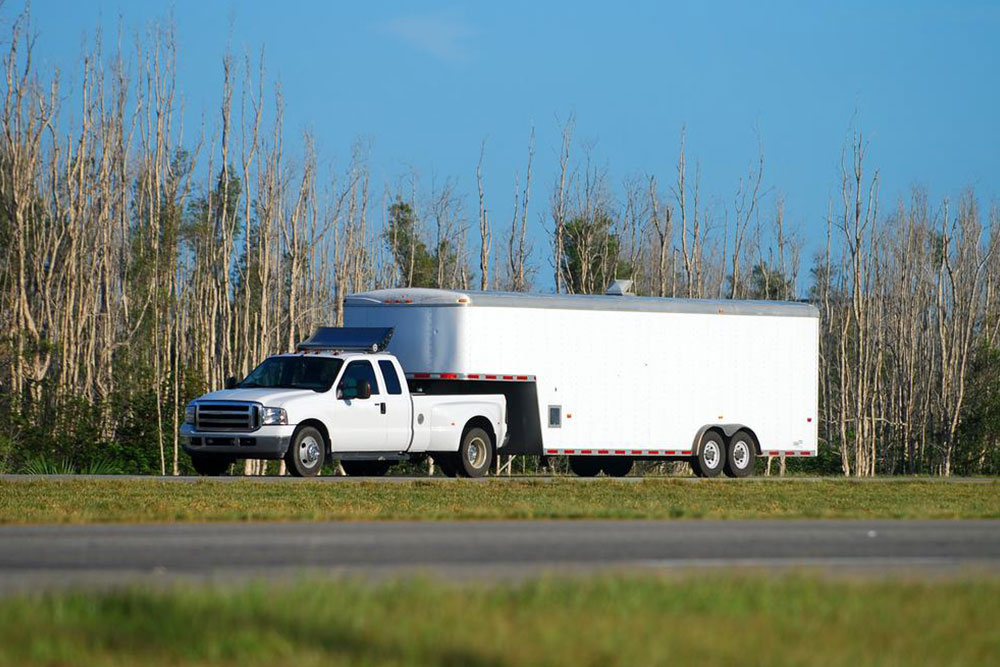Comprehensive Guide to Food Trucks: Features, Budgeting, Models, and Funding Strategies
This comprehensive guide explores the essential aspects of starting a food truck business, including key features, cost factors, popular models, and funding strategies. It provides entrepreneurs with detailed insights into the mobile food industry, helping them make informed decisions to ensure success. From customization options to financing solutions, this article covers everything needed to launch and operate a profitable food truck enterprise, emphasizing flexibility, affordability, and market opportunities for aspiring entrepreneurs.

Food trucks have revolutionized the culinary landscape, transforming street food into a dynamic, mobile industry that caters to a broad audience across urban and suburban environments. These versatile mobile kitchens are increasingly popular due to their flexibility, unique menu offerings, and ability to adapt location based on customer demand and business strategy. As this industry continues to grow, understanding the essential aspects of starting and managing a food truck business becomes crucial. This detailed guide explores the core features, cost considerations, popular vehicle models, and effective funding options available to aspiring food truck entrepreneurs.
Essential Features of Food Trucks
Embarking on a food truck venture requires familiarity with the distinctive characteristics that set these mobile units apart from traditional brick-and-mortar restaurants. Each feature plays a pivotal role in the success and operational efficiency of your business. Here’s an in-depth look at the primary features to consider:
Mobility and Flexibility: The defining quality of food trucks is their ability to move swiftly between locations. This mobility allows operators to participate in various events, festivals, markets, and neighborhood hotspots, enabling them to reach diverse customer bases and capitalize on high-foot-traffic areas without the commitment of a fixed brick-and-mortar storefront.
Customizable Design and Branding: Food trucks come in various sizes and configurations, providing ample opportunities for personalization. Custom paint jobs, signage, and interior layouts help create a compelling brand identity that resonates with targeted demographics. Interior design can be tailored for efficiency, ensuring smooth workflows and safety compliance, while exterior branding attracts attention from passersby.
Extensive Menu Options: One of the key advantages of food trucks is menu flexibility. From gourmet burgers, tacos, and pizza to vegan dishes, desserts, and specialty beverages, food trucks serve a wide array of culinary delights catering to different tastes and dietary preferences. This versatility allows entrepreneurs to experiment with unique concepts or popular trends, making them highly adaptable to changing market demands.
Cost-Effective Operations: Compared to traditional restaurants, food trucks generally require a lower initial investment and operational costs. They eliminate the need for physical storefronts, extensive staff, and expensive lease agreements. This affordability makes the food truck industry accessible to small business owners and startups who want to enter the food service sector with a manageable budget.
Cost Considerations for Starting a Food Truck Business
Understanding the financial investment involved is vital for planning and sustainability. The costs associated with launching a food truck business vary based on several crucial factors:
Vehicle Size and Equipment: Larger trucks with extensive kitchen equipment, refrigeration units, and multiple cooking stations naturally cost more. The choice of appliances, shelving, and custom fixtures also significantly impacts the overall price point.
New Versus Used Vehicles: Purchasing a brand-new food truck ensures the latest technology, warranties, and fewer maintenance issues, but it comes with a higher price tag. Used trucks are more budget-friendly but require thorough inspection and potential refurbishment to meet health and safety standards.
Customization and Branding: Branding elements such as custom wraps, logos, and interior modifications elevate the truck’s visual appeal but can increase initial costs. Strategic investment in branding can enhance market visibility and customer recall.
Location and Market Demand: The geographical area where you plan to operate influences your costs. High-demand locations with busy foot traffic might require permits or lease agreements that add to your expenses. Additionally, aggressive marketing and permit fees should be factored into your budget planning.
Popular Food Truck Models in the Industry
Choosing the right vehicle model is crucial for operational efficiency and branding. Several types of trucks and trailers dominate the market, each suited for specific purposes and culinary concepts:
Step Van: Often referred to as delivery vans or box trucks, these vehicles offer generous interior space, making them ideal for elaborate kitchen setups and high-volume sales. They are customizable for various menu sizes and cooking styles.
Concession Trailer: Trailers that are hitched to trucks or vans, providing substantial room for commercial-grade appliances, storage, and prep stations. They are particularly popular for festivals and outdoor events due to their portability and storage capabilities.
Food Cart: Compact and highly maneuverable, food carts are perfect for serving specific menu options like hot dogs, ice cream, or coffee. They are ideal for busy pedestrian zones and temporary setups.
Converted Bus: Unique and eye-catching, bus conversions transform vintage or modern buses into fully operational mobile kitchens. These vehicles often stand out, attracting customers through their distinctive appearance and capacity for large-scale operations.
After selecting the appropriate model, securing financing becomes a priority to bring your vision to life. Several funding options can support your investment:
Government Grants and Local Support: Many local governments and regional agencies offer grants, subsidies, or low-interest loans specifically designed to assist small food businesses and startups. Researching these opportunities can significantly reduce upfront costs.
Crowdfunding Campaigns: Platforms like Kickstarter and Indiegogo allow entrepreneurs to raise funds by engaging an online community of supporters who believe in your culinary concept. Successful campaigns also promote your brand prior to launch.
Specialized Food Truck Loans: Several financial institutions and lenders provide financing options tailored for mobile food vendors, often with favorable terms suited to small business cash flow patterns.
Personal Savings and Investments: Many entrepreneurs prefer to bootstrap their startup by leveraging personal savings, family funds, or private investments. While this approach involves personal financial risk, it offers maximum control over your business.
By exploring these diverse funding avenues, you can turn your dream of owning a food truck into a tangible reality. Each funding method offers unique advantages and considerations. Carefully evaluate which options align best with your business plan and financial situation to ensure long-term success.
In conclusion, the food truck industry presents a compelling opportunity for entrepreneurs seeking mobility, branding flexibility, and diverse culinary offerings. A strategic approach to understanding features, managing costs, selecting the right models, and securing appropriate funding will significantly enhance your chances of success. With thoughtful planning and execution, your mobile food enterprise can thrive in a competitive marketplace. Whether you are searching online for "food trucks nearby," considering different vehicle models, or exploring financing solutions, this comprehensive guide provides the insights needed to navigate the exciting world of mobile dining.




